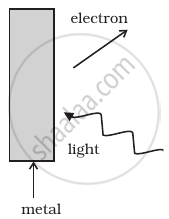Advertisements
Advertisements
प्रश्न
The wave associated with a moving particle of mass 3 × 10–6 g has the same wavelength as an electron moving with a velocity 6 × 106 ms–1. The velocity of the particle is
पर्याय
1.82 × 10–18 ms–1
9 × 10–2 ms–1
3 × 10–31 ms–1
1.82 × 10–15 ms–1
उत्तर
1.82 × 10–15 ms–1
APPEARS IN
संबंधित प्रश्न
How does one explain the emission of electrons from a photosensitive surface with the help of Einstein's photoelectric equation?
How will the thermionic current vary if the filament current is increased?
Would you prefer a material with a high work-function or a low work-function to be used as a cathode in a diode?
An isolated metal sphere is heated to a high temperature. Will it become positively charged due to thermionic emission?
A diode value is connected to a battery and a load resistance. The filament is heated, so that a constant current is obtained in the circuit. As the cathode continuously emits electrons, does it become more and more positively charged?
Why does thermionic emission not take place in non-conductors?
In which case is electron emission from a metal not known?
Consider Figure for photoemission.

How would you reconcile with momentum conservation? Note light (photons) have momentum in a different direction than the emitted electrons.
Give an example each of a metal from which photoelectric emission takes place when irradiated by
- UV light
- visible light.
The work function of a metal is 2.31 eV. Photoelectric emission occurs when the light of frequency 6.4 × 1014 Hz is incident on the metal surface. Calculate
- the energy of the incident radiation,
- the maximum kinetic energy of the emitted electron and
- the stopping potential of the surface.
